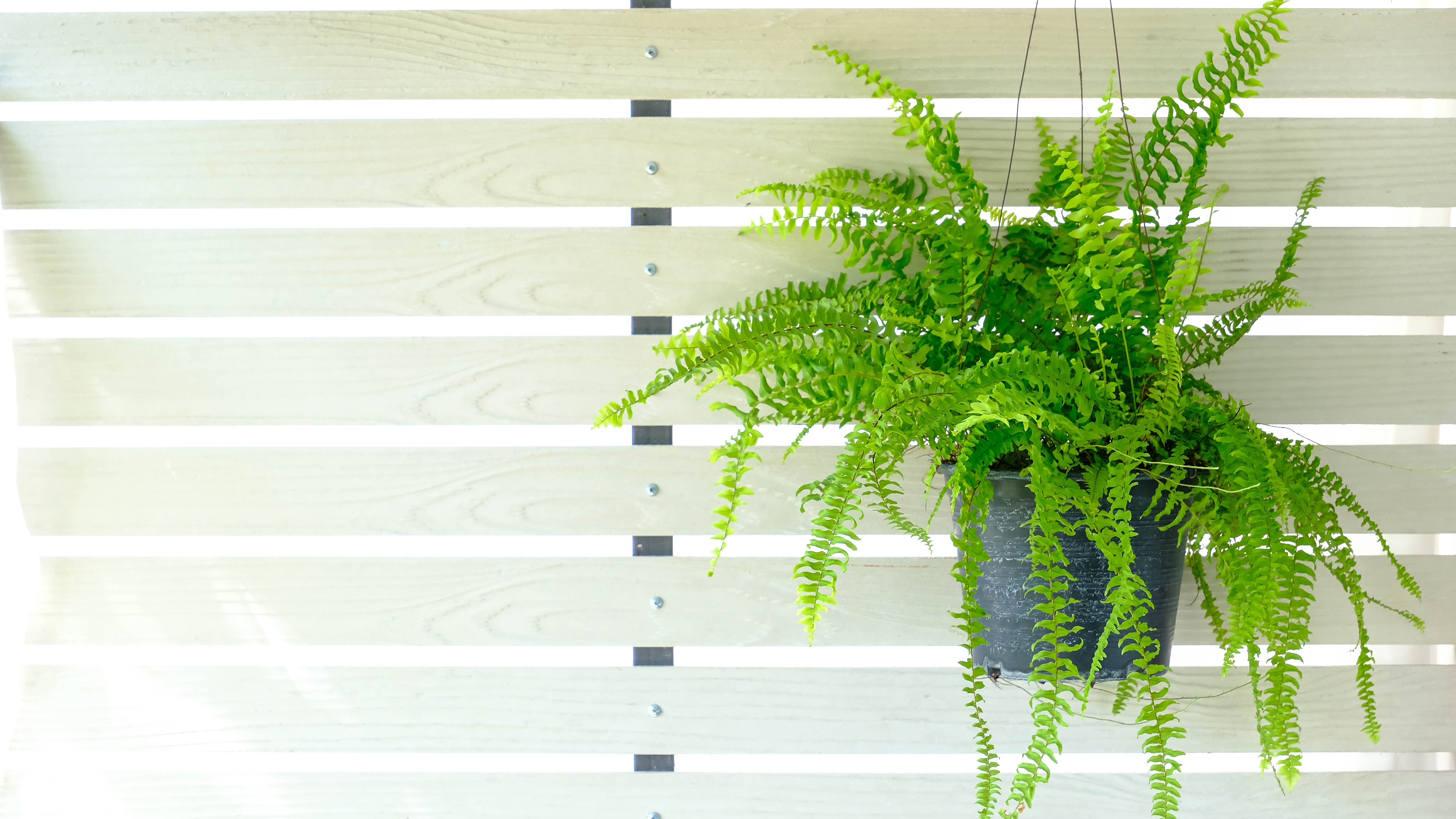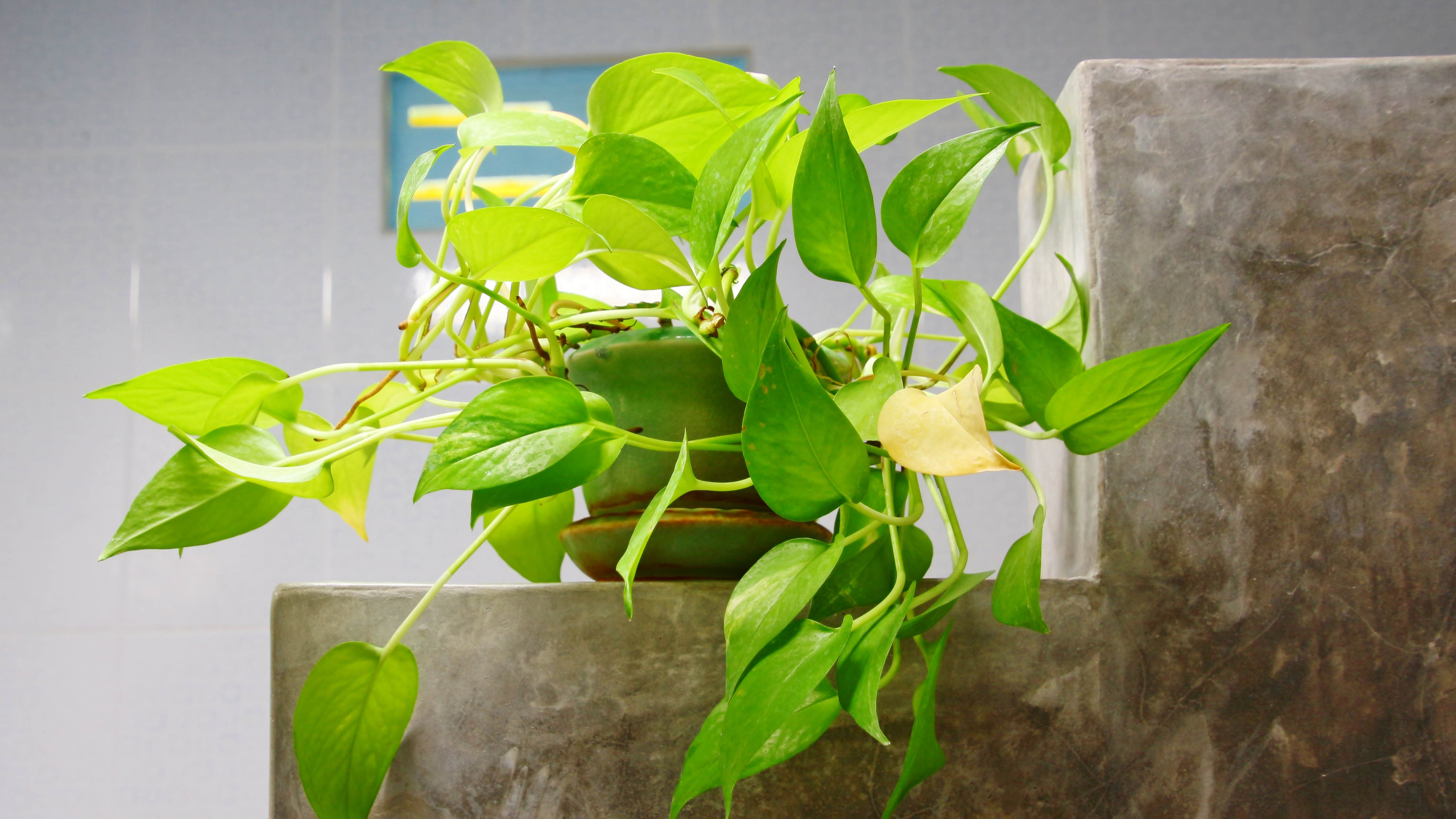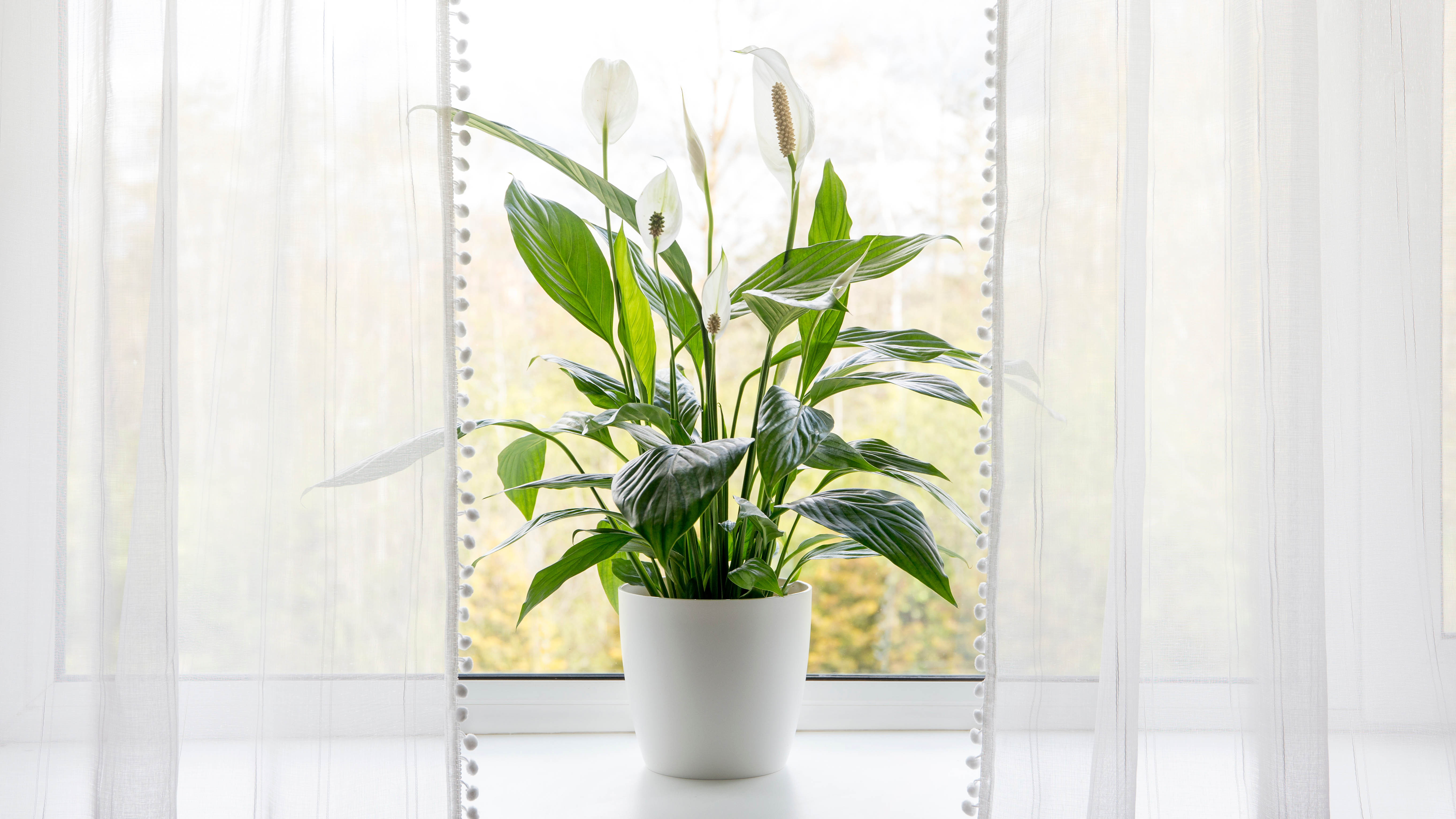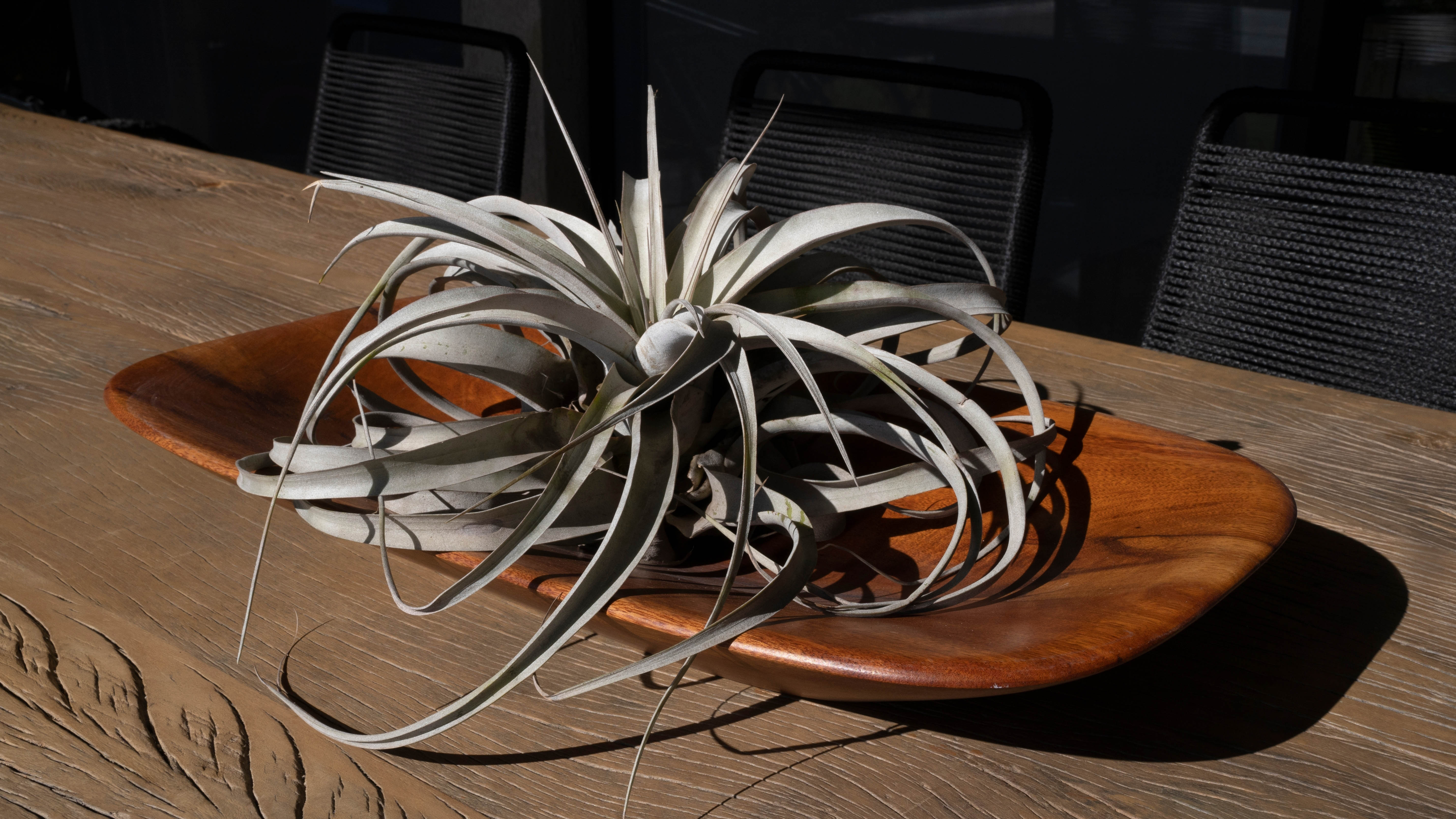7 plants that will thrive in a bathroom
Make your bathroom look good with these plants

As houseplants grow increasingly popular, there’s one room that poses a challenge for greenery: the bathroom. Many bathrooms have a limited amount of natural light, whether due to small window sizes or the choice of frosted glass for privacy. This can create a harsh environment for plants, as they depend on light and photosynthesis to survive.
On top of that, bathrooms tend to experience much greater humidity than other areas of the house thanks to the steam created by hot baths and showers. High humidity can prevent plant moisture from evaporating properly which can lead to rot, if the plant isn’t suited to it.
These tricky conditions will not be a good fit for every plant, particularly those that prefer dry soil and lots of direct light. Fortunately, there are some plants that thrive in a more damp, dimly lit environment. These are often plants that originate from tropical climates or damp woodlands; areas where water is plentiful and skies are overcast or shielded by a tree canopy. Place any of the plants below in your bathroom and they should grow happily, although you may want to rotate them into other areas of the home for a little boost of extra sunlight as needed.
Although we have found 7 plants that can survive without sunlight, and you might also be interested in 7 plants that make your house smell nicer and 5 powerful houseplants that will ease stress and boost your mood.
1. Snake Plant

Snake Plants are ideal for both beginner gardeners and for inhospitable environments, as they are incredibly hardy and resilient. Originally from West Africa, they favor humid conditions and are even able to filter toxins from the air. Thanks to the additional moisture provided by bathroom steam, they should need even less watering than usual if placed there – and these plants have been known to survive a week or two with no watering. Because the leaves grow directly upwards, it won’t take up much floor space and is a good choice for smaller bathrooms.
But a Snake Plant isn’t just a good choice because of its hardiness. With eye-catching long leaves in a dappled green pattern, this plant is almost architectural and can reach several feet in length when happy. The edges are lined in a neon green, which lends some brightness to a white bathroom. While it grows faster in bright light, it can handle low light if that’s all your bathroom has. Fun fact: a Snake Plant also goes by the nicknames “mother-in-law’s tongue,” “viper’s bowstring” and “St George’s sword.”
2. Boston Fern

Ferns are known to abound on the rainforest floor and Boston Ferns are no different. They love moisture and often need to be misted when not in a humid environment, which makes bathrooms the perfect spot for them. Their fronds are covered in small green leaves that are almost feathery in appearance and they can grow quite large and expansive, so make sure to give them enough space to thrive. While not a trailing plant, the size and length of the leaves can make this quite a dramatic looking addition.
Get instant access to breaking news, the hottest reviews, great deals and helpful tips.
One thing to remember is that Boston Ferns do require a minimal amount of indirect sunlight. A skylight would be perfect for this, but other windows are good too – just as long as there is at least one. They also are accustomed to receiving a lot of water, so be sure to check the soil regularly to ensure it hasn’t dried out — the moisture from the bathroom won’t be enough to keep the plant hydrated.
3. Pothos

Pothos are trailing vines, which means that they grow long, leggy branches with large, glossy leaves. When healthy, these plants can trail across shower rails or down from high shelves, making them an attractive decor item as well as adding life to the room. Simply wrap them manually around a support or use hooks and anchors to help guide the vines as they grow across a wall. Some variations have heart-shaped leaves while others are golden in color or dappled white-and-green, making them pretty to look at.
Another benefit of Pothos is that they’re known to be easy to care for. They absorb water easily, which means that they can take full advantage of the available moisture in a bathroom. With minimal attention, they should happily survive but be mindful that they do prefer direct light in order to fully flourish. While they will stay alive and be fine in indirect light, you may not see as much growth as you would with more sunlight.
4. Peace Lily

Just because it’s in a bathroom, it doesn’t mean it can’t be a flowering plant. Peace Lilies are native to the rainforest, like many of the other plants on this list, so it is equally well-suited to moisture-laden environments and indirect sunlight. It also shares the glossy green leaves of others on this list, except it adds to them with bright white flowers. The leaves are large and densely packed, while the flowers are sculptural, making this an elevated take for a bathroom. The flowers begin blooming in early summer and continue through the year.
Most household varieties will only grow about a foot or so in height, but in the wild they can reach several feet tall. Maintaining humidity levels is key to help the plant thrive, as is sufficient indirect light; without it, the plant may not bloom at all (although it should still stay alive.) Due to the volume of its leaves, a Peace Lily can take up some room and should be given ample space to flourish.
5. Tillandsia

Tillandsia, or air plants, are perfectly suited to a bathroom as they don’t root in soil at all but instead draw the majority of their water from the air. This means that the plants don’t need to be contained to a planter, but can be hung creatively in a window or placed directly in a sunny spot on the windowsill. You can even use a terrarium to build out a dedicated landscape for these air plants. Their long leaves are reminiscent of an anemone or seaweed, which provides a nice contrast to a lot of the more classic greenery on this list.
Natural humidity levels in a bathroom should be sufficient to keep Tillandsia happy but this can be supplemented with misting or brief douses in the sink — or shower — every two weeks. They don’t need a lot of light, but make sure they get some indirect light; if your bathroom has no windows at all, temporarily move them to a window to get some sun on their leaves. If in doubt of which varietal to pick, know that the more silver-toned the foliage, the better it can survive dry conditions.
6. Spider Plant

Another plant characterized by its long fronds, Spider Plants have much greater appeal than their namesake. They are unfussy and can survive in both direct light or indirect light, as well as in varying degrees of humidity. When happy, these plants grow very quickly and self-propagate, meaning that you can end up with many baby Spider Plants for the price of one. These offshoots also come with little white flowers, which add some extra dimension to the plant.
Spider Plants have skinny, light green leaves with a white stripe through the center, making them a pretty but minimalist choice. The plant can reach a foot or so in diameter when thriving, although yours may prefer to stay a little smaller. It’s not quite as fond of moisture as some of the other choices on this list, so keep it out of the shower spray – but a little bit of dampness is good for the plant. Moisture levels should stay fairly high for this plant to grow best.
Here's how to care for a spider plant for more tips.
7. Orchid

Orchids have a reputation for being high-maintenance and finicky, but a bathroom actually provides perfect growing conditions for an Orchid. They are native to tropical climates and prefer high-humidity, but not a lot of direct moisture or watering; this means that if you set them up in the right spot, they will then require very little from you. Place an ice cube in the orchid pot once a week and allow the natural bathroom humidity to do the rest. They also prefer indirect light, so a bathroom with bright but filtered light is ideal.
Orchids come in many shades of colors, so you can pick a favorite style or amass a collection. Popular varieties include Dendrobium, Phalaenopsis, and Paphiopedilums, which are all valued for being a little easier to care for. They all grow on bark, not in soil, and grow their beautiful blooms for months at a time, so they’re attractive year-round. Orchids are therefore a nice way to add a pop of color to a bathroom without crowding a space with vegetation.
For more tips, here's how to care for an orchid and make it thrive all year long.
More from Tom's Guide
- 9 best plants that grow back every year
- These are the 7 best low maintenance plants
- We've also found 7 best plants for your patio

Despite making her home in urban metropolises, Madeleine Streets has been nurturing a green thumb for decades.
Raised by a garden designer, she is putting that childhood education to use by helping others learn how to make their garden bloom, while filling her own New York home with cat-friendly plants.
When not writing about gardening and the outdoors, Madeleine loves to cook, study wine and borrow books from her local library.
